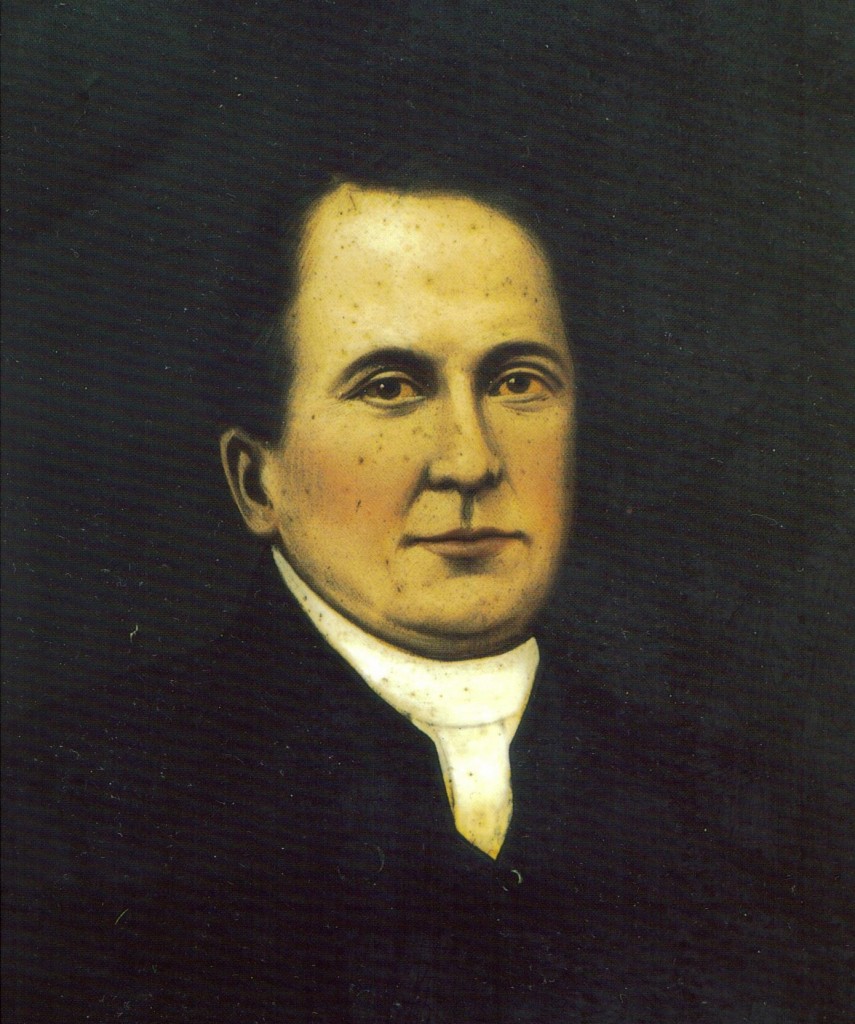Fr. John Murphy
This content was created/compiled by Niamh McDonald.
In Brief:
Fr. John Murphy was a Catholic priest, born in Tincurry, Co. Wexford, who went on to become one of the leaders of the 1798 rebellion in his native county. Not long after the rebels were defeated at the battle of Vinegar Hill, he was captured by British forces. Both he and fellow rebel leader Bagenal Harvey were hanged and then beheaded, before their heads were put on spikes in Wexford town.
_______________________________________________________________________________________________________________
More Information:
Before the Rising
Father John Murphy was born in Tincurry, Co.Wexford and was the youngest son of Thomas and Johanna Murphy. He was described as handsome, well built, extremely intelligent and having great strength and agility. He played handball and was called one of the greatest players. He spoke Irish, English, Spanish, Latin and Greek
He was inspired by the local parish priest Dr. Andrew Cassin. In 1772 he was ordained, then went to study further in Spain, as seminaries were still prohibited by Penal laws.
Fr.Murphy returned home to Boolavogue (also known as Kilcormac). He stayed in the house of a tenant farmers family, the Donohues.
Bishop Sweetfield (who ordained him) was succeeded by Bishop Caulfield who was known as a government man and ordered the people of his diocese to surrender their weapons and pledge loyalty to George the third. Fr.Murphy originally was against rebellion and urged his parishioners to follow his orders and he with 756 other people took an oath that they weren’t part of the United Irishmen.
How it started
When parishioners saw Yeomen (militia who supported the British crown) light the cabin of a suspect rebel on fire and say they were going to raid Boolavogue, they were outraged. Armed with one gun and a few pikes, Fr.Murphy and thirty local men ambushed the yeomen, while the Lieutenant was setting more houses on fire. When the rebels killed the lieutenant and another yeoman, the rest of Fr.Murphy’s army fled.
The Wexford Rising had begun.
Terror and Oulart Hill
On the 27 May 1798, while Fr. Murphy and some local men robbed a close by arms depot, the redcoats burned down Fr. Murphy’s chapel. The British militia began to burn houses and kill suspects. People fled in terror and headed to high ground, and that is why a crowd had gathered on Oulart Hill. Fr.Murphy spotted a military column and planned an ambush. He ordered his troops to put their hats on their pikes and raise them above cover to draw British gun fire, then attacked the British while they were reloading their guns. The militia were defeated and the rebels stole 100 guns.
Battle and Bagenal Harvey
The next day the rebels captured Enniscorthy in a four-hour battle. Two days later, they captured nearby Wexford town and released Bagenal Harvey from jail; he was a rich Protestant and leader of the Wexford United Irishmen. He was made commander-in-chief of the rebel army.
The army was divided into three groups to attack:
1) New Ross and Waterford
2)Bunclody
3) Gorey and Arklow,
after which all rebels would join in Co. Wicklow.
At Tubberneering Fr. Murphy’s men defeated a strong force and captured Gorey. When besieging towns, he would create a cattle stampede, creating a diversion while rebels attacked from behind. But they failed to take Arklow, where they were badly beaten.
Meanwhile, Harvey’s force was defeated in New Ross. This was the bloodiest battle of the Rebellion. The battle was followed by a rampage by the red coats. More than 3,000 rebels were killed during and after the battle. Bagenal Harvey resigned as commander-in-chief
Massacre on Vinegar Hill
Bagenal Harvey was replaced by Fr. Philip Roche, who told Fr. Murphy to retreat to the main camp, Vinegar Hill. With reinforcements rushed from England, General Lake, commander of the British forces, launched a fierce attack on the rebels here. His 20,000 soldiers, defeated the poorly armed rebels in this last big battle of the Rising, at Vinegar Hill on 21 June. About 500 rebels, among them Fr. Murphy’s brother, were killed. Lake took no prisoners and shot every wounded rebel captured. The Enniscorthy courthouse, used as a hospital, was burned down with 80 wounded rebels inside.
Fr. Murphy’s Final Efforts
The rebels tried to branch out of Wexford and crossed the border at Scullabogues Gap. On the 24 June they captured Castlecomer, Co. Kilkenny, though at the loss of 100 men. On June 26th, at the battle of Kilcummney hill in County Carlow, they were tricked and defeated. Fr.Murphy and his bodyguard, James Gallagher, were separated from the main group and stayed in a friend’s house in Tullow.
A Bitter Outcome
On the 2nd of July, Fr. Murphy and James Gallagher were captured and brought to Tullow before a military tribunal. Both were sentenced to death and were tortured to try and get more information from them. They were both hanged in Market Square, Tullow, as well as that Fr Murphy was stripped, flogged, decapitated, his corpse burnt in a barrel of tar and his head impaled on a spike. This final gesture was to set an example to
any other suspect rebels. The five week Wexford Rising was one of the bloodiest periods in Irish history. It is estimated that more than 30,000 people died in that short time, during which the British forces confiscated 79,630 pikes and 48,109 guns.
______________________________________________________________________________________________________________
The Boys of Wexford
[youtube]http://www.youtube.com/watch?v=SmBTjeowz4k[/youtube]
______________________________________________________________________________________________________________
Useful Links:
Catholic Ireland Father John Murphy – http://www.catholicireland.net/church-a-bible/church/history/479-father-murphy-of-boolavogue
Wikipedia Father John Murphy – http://en.wikipedia.org/wiki/Father_John_Murphy
Ancient Order of Hibernians Division 9 – http://www.aohplymouth.com/Division%209%20History.htm
National 1798 Centre – http://www.iol.ie/~98com/leaders.htm
_____________________________________________________________________________________________________________
History@Banagher College, Coláiste na Sionna.
The URI to TrackBack this entry is: http://teachnet.eu/tobrien/about/revolutions/revolution-in-ireland/fr-john-murphy/trackback/
One Comment Leave a comment.
Leave a Comment
You must be logged in to post a comment.




thats a very good video